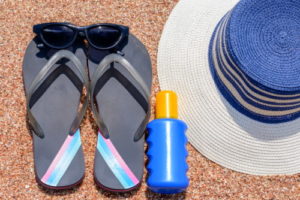Introduction
In the uncertain journey of life, emergency situations can strike when the very least anticipated. Whether it's a youngster choking on a plaything, an elderly family member experiencing a clinical dilemma, and even an abrupt cardiac arrest throughout a First Aid Training in Port Macquarie family members gathering, understanding how to react can indicate the difference between life and death. This is where Mouth-to-mouth Resuscitation (Cardiopulmonary Resuscitation) enters play. It's not just a skill for health care professionals; it's an essential tool every family members must have in their emergency situation toolkit. Is your home mouth-to-mouth resuscitation all set? In this detailed overview, we'll discover whatever you require to learn about CPR, its relevance, and useful suggestions to guarantee your family is prepared for any type of emergency.


Is Your House mouth-to-mouth resuscitation Ready? The Value of Mouth-to-mouth Resuscitation Training
Understanding the Necessity of Mouth-to-mouth Resuscitation in Households
Cardiac apprehension can take place anywhere-- in the house, in the park, or perhaps at work. According to the American Heart Organization, nearly 350,000 out-of-hospital cardiac arrests occur annually in the united state alone. If spectators execute mouth-to-mouth resuscitation immediately, they can increase or perhaps triple a target's opportunities of survival. Thus, recognizing CPR conserving lives isn't simply a slogan; it's a truth that can be crucial in emergencies.
Why Every Family Must Learn CPR
Imagine your kid instantly falls down during play-- would certainly you recognize what to do? Having standard knowledge of exactly how to perform CPR can equip households to act promptly First Aid Training Port Macquarie and effectively in essential situations. Not only does it save lives but also helps reduce stress and anxiety throughout high-stress scenarios.
The Function of Local CPR Classes
Local CPR classes usually give hands-on training that can substantially enhance your skills and self-confidence. These courses are normally led by qualified teachers who understand how to share critical details plainly and successfully. Many organizations supply programs customized for certain age groups and situations-- ensuring everyone from babies to adults understands how to react in emergencies.
Household mouth-to-mouth resuscitation Readiness: Evaluating Your Existing Status
Evaluating Your Understanding and Skills
Before diving deeper right into certain methods and suggestions, take a moment to assess what you currently learn about CPR:
- Do you know just how to carry out chest compressions? Are you accustomed to utilizing an AED (Automated External Defibrillator)? Have you ever before taken an emergency treatment class?
Assessing your current expertise will certainly aid identify spaces that require addressing.
Creating an Emergency situation Feedback Plan
Every household should have an emergency situation action plan that consists of:
Designated emergency contacts A list of local emergency services A plan for just how each member will interact throughout an emergencyBeing organized ensures every person knows their role when seriousness strikes.
Essential Abilities: Exactly how To Do CPR
Basic Actions for Adult CPR
Call 911: Ensure emergency situation services are on their way. Position the Person: Lay them on their back on a flat surface. Perform Upper body Compressions:- Kneel beside them. Place one hand on top of the other in the center of their chest. Push down hard and fast (a minimum of 100-120 compressions per min), making sure correct compression depth.
Infant mouth-to-mouth resuscitation Technique
Performing CPR on babies calls for care:
Call for aid immediately. Position the child face up on a company surface. Use two fingers to lower concerning 1 1/2 inches deep at a rate of 100-120 compressions per minute. Give 2 rescue breaths if educated to do so.Advanced Resuscitation Skills
For those looking to delve much deeper right into advanced resuscitation strategies, take into consideration registering in specialized programs covering:
- Advanced air passage management Use of accessories like bag-valve masks Understanding numerous rhythms with ECG interpretation
Using AED: Just how To Use AED Properly During Emergencies
Understanding AEDs: What They Are and Why They Matter
An Automated External Defibrillator (AED) is designed to examine heart rhythms and provide shocks if necessary. Understanding exactly how to make use of an AED can substantially improve survival rates adhering to heart arrest.
Steps To Utilize An AED Correctly
Turn on the AED as quickly as possible. Attach pads according to guidelines-- one pad goes on the top right upper body while another takes place the lower left side. Ensure no one is touching the individual while it assesses heartbeat patterns. Follow triggers given by the tool; if shock is suggested, press the shock button only after verifying no one is touching the patient.Common Misconceptions Concerning CPR You Need To Know
Debunking Common False impressions Regarding CPR Effectiveness
One prevalent myth recommends that "CPR constantly reboots heart" when this isn't always true; instead, it keeps blood circulating until expert assistance arrives.
The Misconception Concerning Incorrect Compression Depths
Another false impression surrounds compression depths-- several think any deepness will certainly be sufficient; nonetheless, wrong compression depth can significantly affect results in real-life situations.
Special Circumstances: Sports-related Heart Attack & Sinking Victims
CPR for Sinking Sufferers: Distinct Considerations
Drowning targets typically need prompt interest because they might struggle with both respiratory system failing and cardiac arrest at the same time:
Remove them from water promptly. Initiate rescue breaths prior to starting upper body compressions-- this differs from conventional adult procedures where compressions begin first.CPR for Sports-related Heart attacks: Special Protocols
Sports-related occurrences are ending up being progressively usual amongst professional athletes due to intense physical exertion causing arrhythmias or heart attacks:
- Always examine athletes' wellness history before involving them in sports. Understand very early indication such as shortness of breath or wooziness throughout activities can suggest serious underlying issues needing instant treatment with appropriate protocols including calling emergency solutions promptly!
Navigating Through Online Resources: Where To Locate Reputable Information?
Online Certification Programs for Families Looking For Training Options
With technology making everything extra available than ever before-- think about taking advantage of online qualifications! Platforms like Red Cross offer programs ranging from fundamental first aid training all through advanced resuscitation skills at adaptable routines tailored around active lifestyles!
Table 1: Comparison Chart of Online vs In-person Courses
|Attribute|Online Course|In-person Course|| ----------------------------|--------------------------|------------------------|| Adaptability|High|Reduced|| Hands-on Technique|Limited|Considerable|| Expense|Typically Reduced|Usually Higher|| Certification Availability|Immediate Upon Conclusion|After Final Exam Passed|
FAQs
Q1: What is the validity period for my mouth-to-mouth resuscitation certificate?
A1: Many companies suggest renewing your qualification every 2 years; however, inspect neighborhood guidelines as needs might differ based upon state guidelines.
Q2: Exist details age-related standards I ought to follow when performing CPR?
A2: Yes! There are distinct age-specific standards regarding compression ratios/techniques for infants versus adults which must be stuck very closely also ensure optimal results!
Q3: Can I find out both First Aid and CPR together?
A3: Definitely! Several courses supply combined training alternatives (mouth-to-mouth resuscitation And First Aid Combination) supplying comprehensive protection over various situations one could encounter!
Q4: Just how effective is doing immediate cardiopulmonary resuscitation?
A4: Studies recommend that prompt activity increases survival rates substantially-- with some records suggesting survival prices ranging from 10% up in the direction of also higher numbers depending upon prompt treatments executed properly via qualified personnel!
Q5: What devices do I need in the house related especially in the direction of lifesaving steps like AEDs etc?
A5: Basics consist of having easily available tools such as automated exterior defibrillators in addition to important first-aid packages equipped having bandages/splints together with various other needed products geared in the direction of dealing with injuries suffered prior arrival by professional health care providers!
Q6: Can I take online courses if I live outside Australia yet dream still go after certification via Australian recognized institutions?
A6: Yes! Lots of programs cater globally offering options matched worldwide no matter where staying-- simply make sure they identify qualifications across borders sufficiently ahead of time inspecting appropriate accreditation standards controling such qualifications within particular nations entailed here!
Conclusion
Preparing your family with crucial life-saving skills like Cardiopulmonary Resuscitation has actually never been much more vital than now! By recognizing what comprises effective strategies along with acknowledging particular methods relating to numerous situations-- families outfit themselves not only psychologically yet virtually ensuring they're ready when encountered unforeseen difficulties develop unexpectedly within day-to-day life circumstances encountered on a regular basis throughout time invested together!
So ask on your own today-- Is Your House CPR Ready? Vital Tips for Every Family might possibly conserve lives-- they say understanding is power nevertheless! Prioritize education/training opportunities available near/in vicinity today-- we wish this short article offers valuable insights assisting everybody towards being much better prepared handling emergencies efficiently relocating forward!